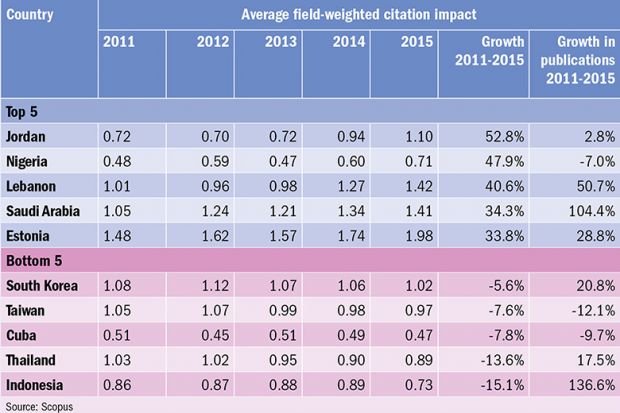View and/or download a high-resolution version
This table shows which five countries’ research improved or deteriorated in quality the most between 2011 and 2015.
The data, drawn from Elsevier’s Scopus database, show that some countries have managed to improve both the quantity and quality of their research, most notably Saudi Arabia. The country has poured money into its research system, for example by setting up the King Abdullah University of Science and Technology near Jeddah, a graduate institution with a $10 billion (£8 billion) endowment that started life in 2009. However, Saudi universities have also been accused of gaming the system by offering highly cited foreign researchers part-time contracts in return for including institutions’ names on their papers.
Nigeria has managed to improve the quality of its research (from a low base), but produced fewer papers; meanwhile Indonesia has seen an explosion of articles, but this has come at the cost of a drop in quality.
Quality is measured by looking at articles’ field-weighted citation impact, a measure of how many times they have been cited, controlling for subject area, with the world average being 1.
